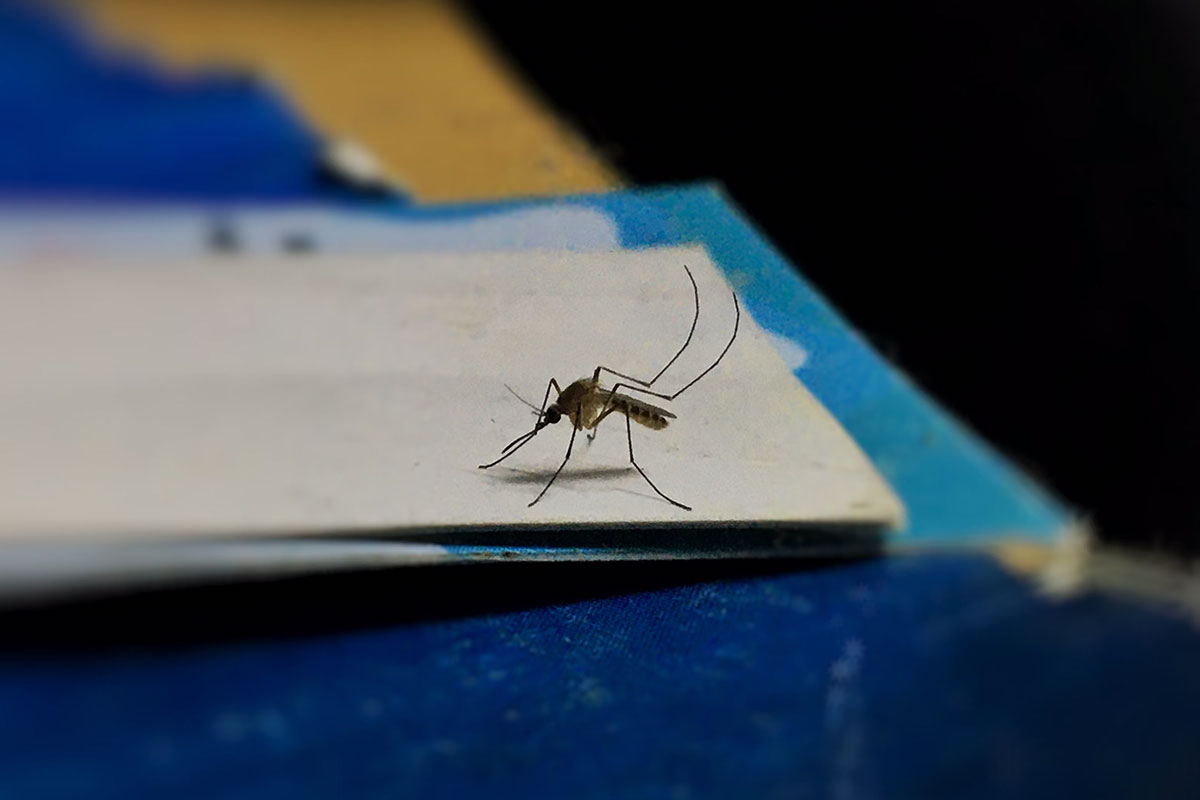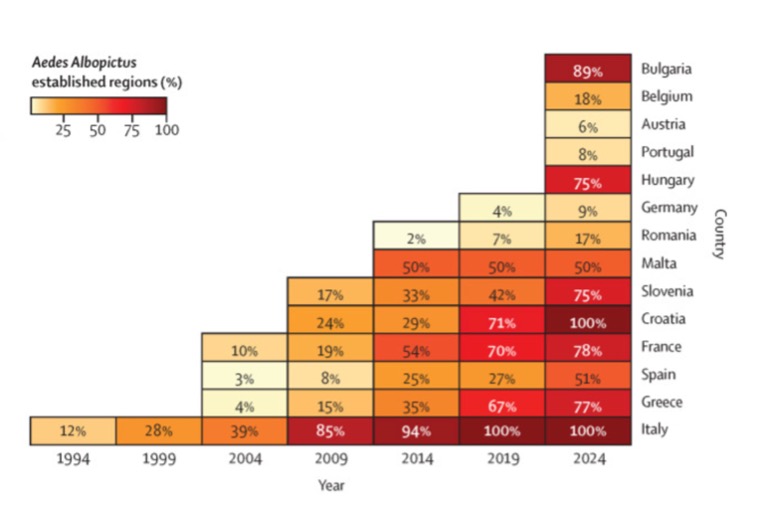Is dengue becoming endemic in Europe?
Climate change means the continent is becoming warm enough for dengue-carrying mosquitoes to thrive.
- 3 June 2025
- 2 min read
- by Priya Joi

Dengue and chikungunya, once tropical diseases, could soon become a persistent health threat in Europe as climate change drives the spread of disease-carrying mosquitoes into previously cooler climates, according to new research published in The Lancet Planetary Health.
The study, led by researchers from Umea University in Sweden and the University of Heidelberg in Germany, analysed 35 years of data on the spread of dengue and chikungunya across Europe.
Global warming is accelerating the spread of mosquito species that are the main vectors for both the dengue and chikungunya viruses.
The findings reveal a dramatic shift: from sporadic imported cases to local outbreaks, and now toward endemicity – meaning these diseases could become a regular feature in parts of the continent.
A hotter, riskier Europe
Scientists have long warned that climate change will redraw the geography of where diseases such as malaria and yellow fever will spread.
Nearly half the world’s population is now at risk of contracting dengue or chikungunya, both of which can cause severe fever and, in rare cases, be fatal.
Global warming is accelerating the spread of the Asian tiger mosquito (Aedes albopictus) and, to a lesser extent, the yellow fever mosquito (Aedes aegypti), which are the main vectors for both dengue and chikungunya viruses.
The research found that warmer summer temperatures are the strongest predictor of outbreak risk. This, combined with increasing travel and mobility, can facilitate the spread of these two diseases.

In 2024 – the hottest year in the study period – the European Union reported 304 dengue cases, a historic peak compared to 275 cases in the previous 15 years combined.
The first outbreak of chikungunya in Europe was documented in Ravenna, Italy, in 2007, resulting in 330 cases. In 2010 there was a dengue outbreak in Croatia. Since then, Italy, France and Spain have experienced recurrent dengue and chikungunya outbreaks.
Surge in outbreaks
Under worst-case climate scenarios, the researchers project that the number of dengue and chikungunya outbreaks could increase five-fold by 2060 compared to current rates. The gaps between outbreaks are also shortening, meaning the risk of endemicity is growing.
The authors note that cases have been reported so far in high-income countries with robust surveillance systems, raising the question of whether the diseases are also spreading unnoticed in less well-resourced countries.
The study underscores the urgent need for robust public health measures, including stricter vector control, enhanced surveillance and early warning systems. “Mitigating the transition to endemicity will require proactive, vigilant and well-targeted public health interventions,” the authors write.
More from Priya Joi
Recommended for you








